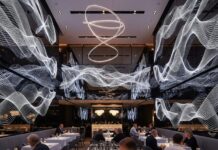

by Alina Livneva
Geometric Abstract Art
The pictorial language of geometric abstract art is based on the use of simple geometric forms and shapes placed in non-illusionistic space and combined into nonobjective compositions. The style evolved as the logical conclusion of the Cubist deconstruction and reformulation of the established conventions of space and form. Started by Georges Braque and Pablo Picasso in 1907–8, Cubism subverted the traditional depiction relying on the depiction of imitations of forms of the visual world.
The Analytic Cubist phase peaked in mid-1910 and made available to creators and artists the theory of planarity of overlapping frontal surfaces held together by a linear grid.
The next phase–Synthetic Cubism, 1912–14–introduced the flatly painted synthesized shapes, abstract space, and “constructional” elements of the composition. These three facets became the fundamental characteristics of geometric abstraction. Usually, it was combined with the freedom of experimentation with different materials and spatial relationships between various compositional parts, which also emphasized the flatness of the picture surface, as the carrier of applied elements, and the physical “reality” of the explored forms and materials. Geometric abstraction, through the process of purifying art from visual reality, focused on the inherent two-dimensional features of the painting.
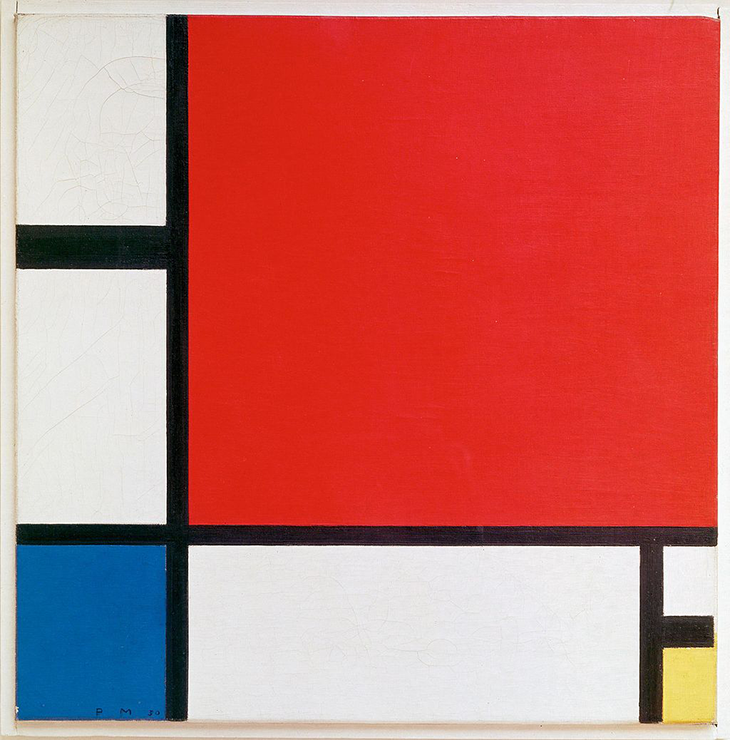
This process of purely pictorial reality constructed of elemental geometric shapes assumed different stylistic expressions in various European countries. In Holland, the most important creator and the most famous proponent of geometric abstract language were Piet Mondrian (1872–1944). Along with other members of the De Stijl group–Theo van Doesburg (1883–1931), Bart van der Leck (1876–1958), and Vilmos Huszár (1884–1960). Mondrian’s work was meant to convey “absolute reality,” construed as the world of pure geometric forms according to the vertical-horizontal principle of direct lines and pure spectral colors.
Mondrian’s geometric design, which he termed “Neoplasticism,” developed between 1915 and 1920. For the next thirty years continued to work in his characteristic geometric fashion. Expunged of all references to the actual world, and posited on the geometric side of the canvas through vertical and horizontal lines of varied thickness, complemented by cubes of primary colors, especially blue, red, and yellow. Similar compositional principles underlie the work of the De Stijl artists, who implemented them with slight formal modifications to achieve their individual, personal expression.
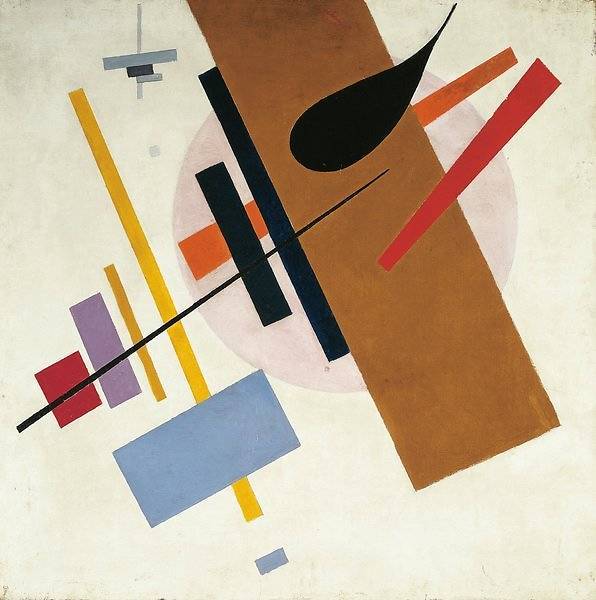
The job of this avant-garde artist Kazimir Malevich (1879–1935), in style he termed Suprematism.
Creating nonobjective compositions of elemental forms floating in unstructured white space, Malevich tried to achieve “the absolute,” the highest spiritual reality that he called the “fourth dimension.” Simultaneously, his compatriot Vladimir Tatlin (1885–1953) originated a new geometric abstract idiom in an advanced three-dimensional form, which he dubbed “painterly reliefs” and then “counter-reliefs” (1915–17). These were assemblages of randomly found industrial materials whose geometric form was dictated by their inherent properties, such as wood, metal, or glass. That principle, which Tatlin called “the civilization of materials,” spurred the rise of the Russian avant-garde movement Constructivism (1918–21), which explored geometric form in two and three dimensions.
The primary practitioners of Constructivism included Liubov Popova (1889–1924), Aleksandr Rodchenko (1891–1956) (Museum of Modern Art, New York), Varvara Stepanova (1894–1958), and El Lissitzky (1890–1941). It was Lissitzky who became the transmitter of Constructivism to Germany, where its principles were later embodied in the teachings of Bauhaus. Founded by the architect Walter Gropius in Weimar in 1919, it became throughout the 1920s (and until its dismantling by the Nazis in 1933) the vital proponent of geometric abstraction and contemporary experimental architecture.
As a teaching institution, the Bauhaus surrounded different areas: painting, graphic arts, stage design, theater, and architecture. The art faculty was recruited from among the most distinguished painters of the time: Wassily Kandinsky, Paul Klee, who were devoted to the idea of the purity of geometric form as the most suitable expression of the modernist canon.
In France, during the 1920s, geometric abstraction manifested itself as the Underlying principle of the Art Deco style, which propagated widespread use of the geometric form for decorative purposes in the decorative and applied arts as well as in design. In the 1930s, Paris became the center of geometric abstraction that arose from its Synthetic Cubist sources and concentrated around the group Cercle et Carré (1930), and later Abstraction-Création (1932).
With the outbreak of World War II, the attention of geometric abstraction changed to New York, where the tradition was continued by the American Abstract Artists group (formed in 1937), including Burgoyne Diller and Ilya Bolotowsky. With the advent of the Europeans Josef Albers (1933) and Piet Mondrian (1940), and such significant events as the exhibition Cubism and Abstract Art (1936), organized by the Museum of Modern Art, and the creation of the Museum of Non-Objective Art (1939, today the Guggenheim), the geometric tradition acquired a new resonance. However, it was basically past its creative phase. Its influences, however, attained younger generations of musicians, most directly affecting the Minimalist art of the 1960s, which used pure geometric form, stripped to its austere essentials, as the principal language of expression. Artists such as Donald Judd, Dan Flavin, and Dorothea Rockburne analyzed the geometric tradition and transformed it into their artistic vocabulary.
Abstract geometric art examples
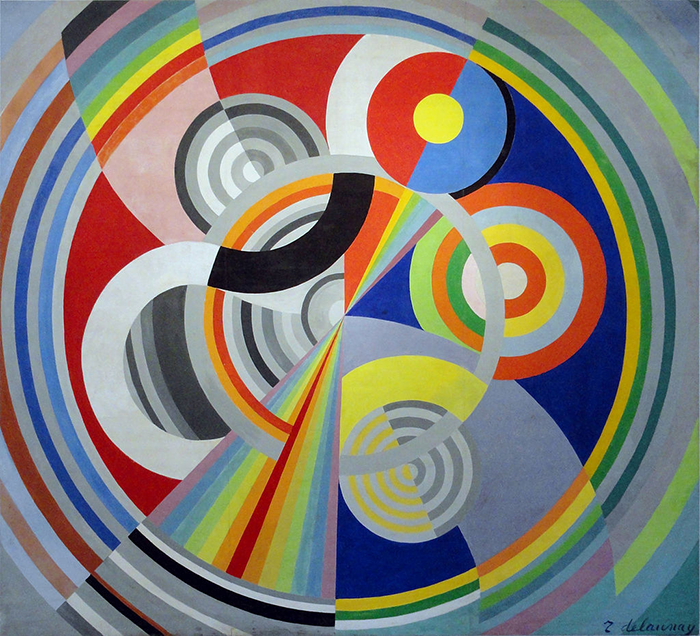
ROBERT DELAUNAY
The first works of Robert Delaunay were Neo-Impressionist but with time his work Simultaneous Windows 1912 was his last semi-figurative work before he began experimenting with complete non-objectivity. His most significant contribution to abstract art was co-founding the Orphism art movement, an offshoot of Cubism that focused on pure abstraction and vivid colors. The motion aimed to dispense familiar subject matter and consequently played a vital role in abstract art development. Delaunay’s paintings were based on the optical qualities of brilliant colors that were so dynamic they would serve as the form. By being the chief and most renowned figure of Orphism, Delaunay is rated among the most influential abstract artists.
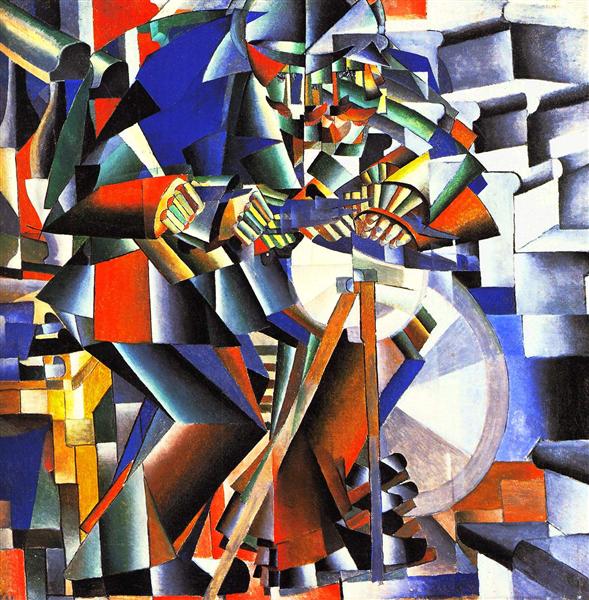
KAZIMIR MALEVICH
Kazimir Malevich was the founder of Suprematism, which concentrated on primary geometric forms, such as squares, circles, lines, and the use of a limited range of colors. His Black Square is one of the most famous works in the history of art. Also, an art theoretician he wrote the book The World as Non-Objectivity, which outlined his suprematist theories. He was a crucial figure in the evolution of overall abstraction and reducing a painting into its geometric essence.
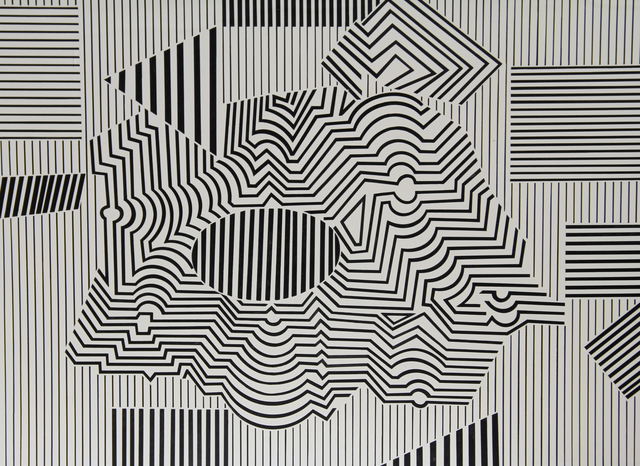
Victor Vasarely
Victor Vasarely creates an optical illusion through precise manipulation of patterns, shapes, and colors. Containing non-representational shapes, he often created an illusion of motion. He worked as a graphic designer and a poster artist. Vasarely finally becomes one of the founders and the most famous figure of the Op art movement. Op art influenced the art world by spreading to areas, including architecture, computer-aided design, animation, and fashion. Vasarely’s painting Zebra (1937) is considered among the earliest examples of OP art. He went on to make some of the movement’s most notable works in both sculpture and painting. Victor Vasarely is Called the “Father of Op Art.”
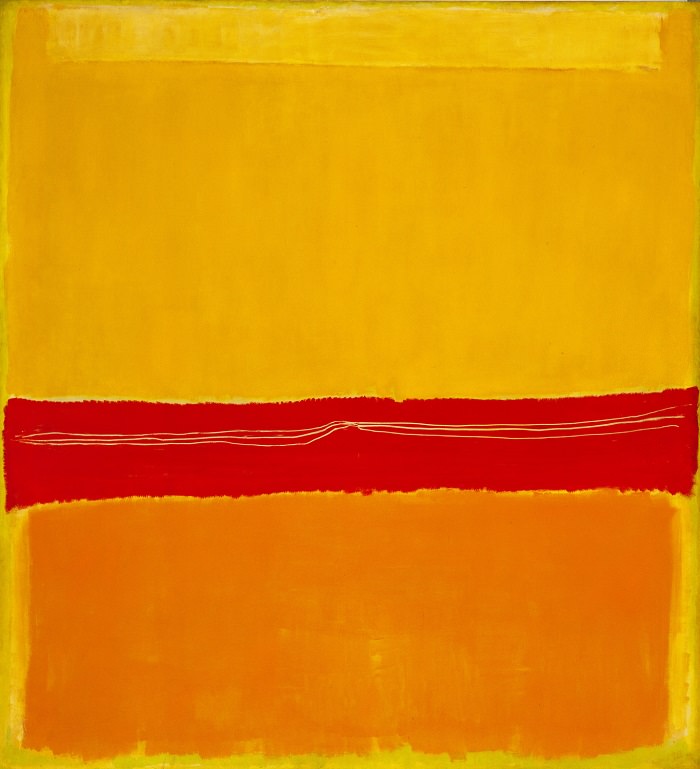
MARK ROTHKO
He immigrated to the United States when he was a kid. He moved through several styles in his artistic career, including Surrealism. Rothko becomes a pioneer of Color Field painting. The color becomes the main subject. Rothko is classified as one of the leading abstract artists. However, he insisted that he was not an abstractionist. His primary focus was detecting mysticism and esoteric aspects of colors and their combinations. Painting was a technique of spiritual expression for Rothko, and lots of viewers have broken down in tears before his works. Despite his announcement, the participation of Rothko to Abstract Expressionism is monumental.
In modern practice, the love for purity in geometry and color follows the legacy of major periods of the past. The fascination with geometric artwork is visible not only in the field of visual art but as a major feature of graphic design and crafts works.
Always at the center of important collections, exhibitions, or auctions, the following works are perfect examples of geometric abstraction.
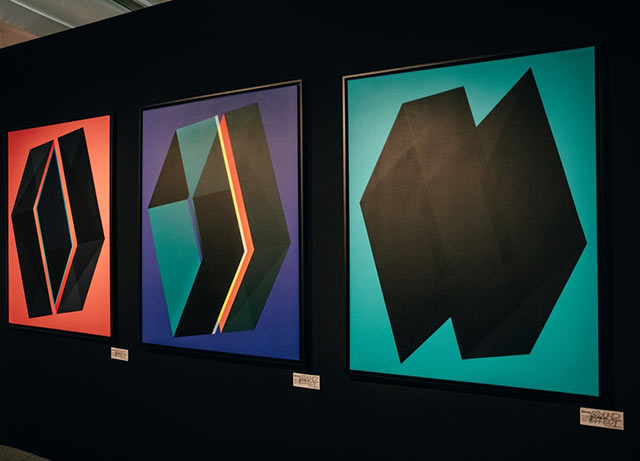
Arthur Dorval
He is recognized as one of the most prominent young French artists. In his signature style of the play with color and geometrical shapes, Dorval’s works have a particular movement and vibrancy that is closely connected to architectural objects. Upon studying design and illustration, Dorval decided to focus his imagination on the re-invention of geometric art.
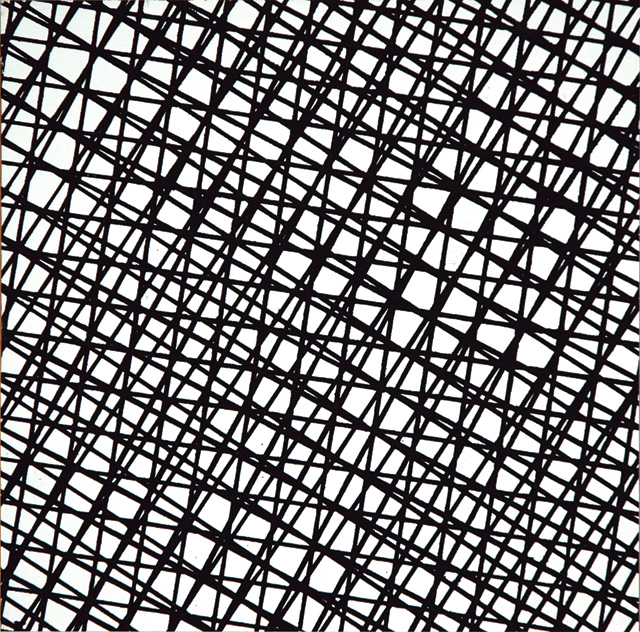
Today, Francois Morellet is described as one of the leading representatives of geometric art. The application of mathematical systems and geometry concepts places him in the middle of Conceptual and Minimal art production also. Influential for the notion of the demystification of the art as well as the liberation from subjectivity, Morellet’s infinitive structures do not limit the boundary of the canvas. His grid structures, both in painting and in sculpture, are created with an array of non-traditional materials.
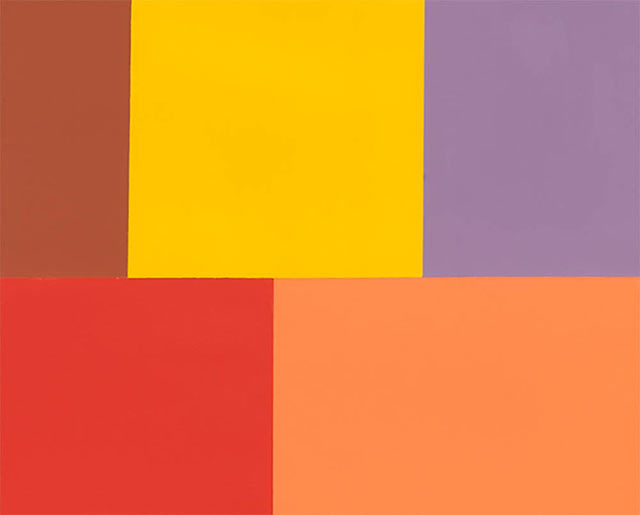
Tom McGlynn
Tom McGlynn is known for contrasting colors and minimalist approach. Working across painting, drawing, photography, and sculpture, Mc Glynn also works as a curator. Far from predictable, his color choice creates a feeling of contradicting forces. His test pattern series explores the heart of the contemporary being through the eye’s response to the form and color. His painting denies any emotion or evidence of the artist’s inner being and reflects similar notions of major minimalist works of the past.
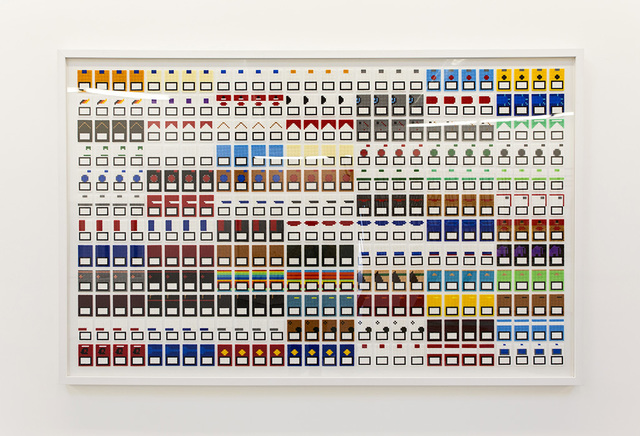
Luke Newton
Luke Newton – Beads Thrill – Future Interpretation of the most mundane things. Transforming various everyday objects, like iPods into defensive weapons, or attaching red stickers in a variety of forms on the canvas, Newton stands as one of the important authors of the New Pop Art movement. Entirely created using pearls, this minimalist abstract geometric art investigates the substance and the repetitive type of the tiny black rectangles on the surface.
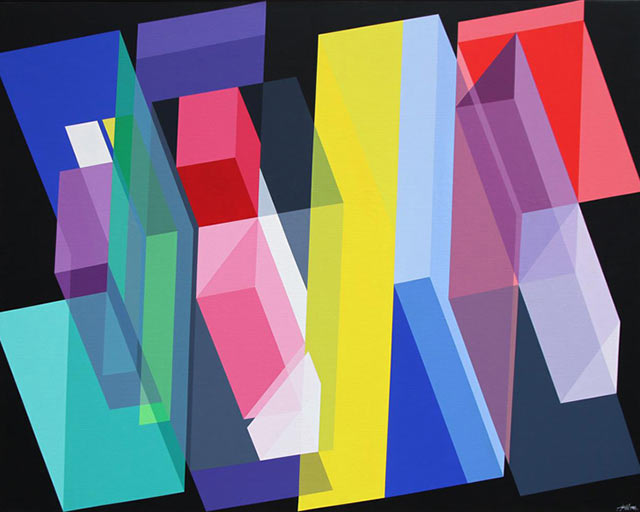
Fritz Ruprechter
Ruprechter is a magician of the watercolor artwork. One of the most important post-minimalist artists, his pictures, vibrate love of color and tranquility. The transparency of the medium includes an element of poetry hidden between the layers of paint. Recognized as one of the most significant Austrian abstract painters, Ruprechter explores various geometrical and linear forms and successfully attracts the fragments into a whole. His drawing Untitled 2 (Blue/Grey) is made with watercolor and lacquer on Masonite and represents a perfect example of his celebrated geometric artwork.
Gheorghe Virtosu
At the current stage, the direction continues to develop in new forms and movements. In modern art, shapes and colors have truly significant significance and even a specific philosophical meaning.
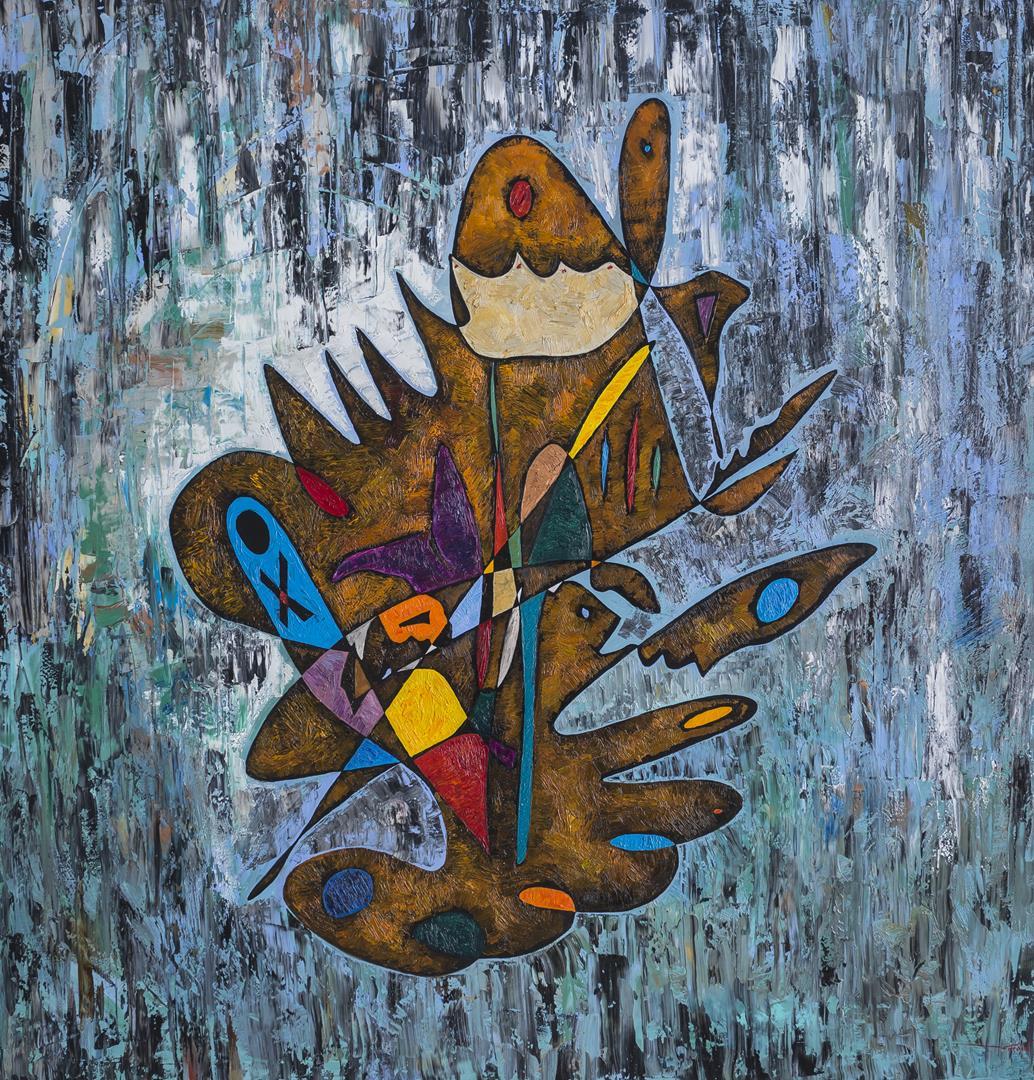
Great merit of Gheorghe Virtosu is to question the world, its realities, and its hardship. A symbolist painter, aimed at showing man’s thoughts. Through abstractionism and the new geometry of form, the artist asks questions to the observer. The observer has to reflect on the human condition. To characterize his works is the always bright color scheme. In the eternal struggle, light always wins. New ideas are always represented, which aims to find their new dimension in our society.
The Master’s works are characterized by their value: cultural and ideological. Ideology is the bases of a brilliant thought the artist decides to share with all of us. A free sign. A sign that has no need to draw rational bisectors. A sign that once freed from the prison of reason, come to inhabit our world. Through the genius of his sign, traces what are the new guidelines of geometric painting. A painting that is no longer forced to follow rigid “academic” schemes, but which, thank the hand of the artist, finds a new Cartesian axis on which to express its power.
He masterfully traces what we call “the most hidden paths of the psyche”. A psyche that after wandering for years in the labyrinth of ideas can finally express its truth. Virtosu makes the observer participate in what are his most intimate secrets.
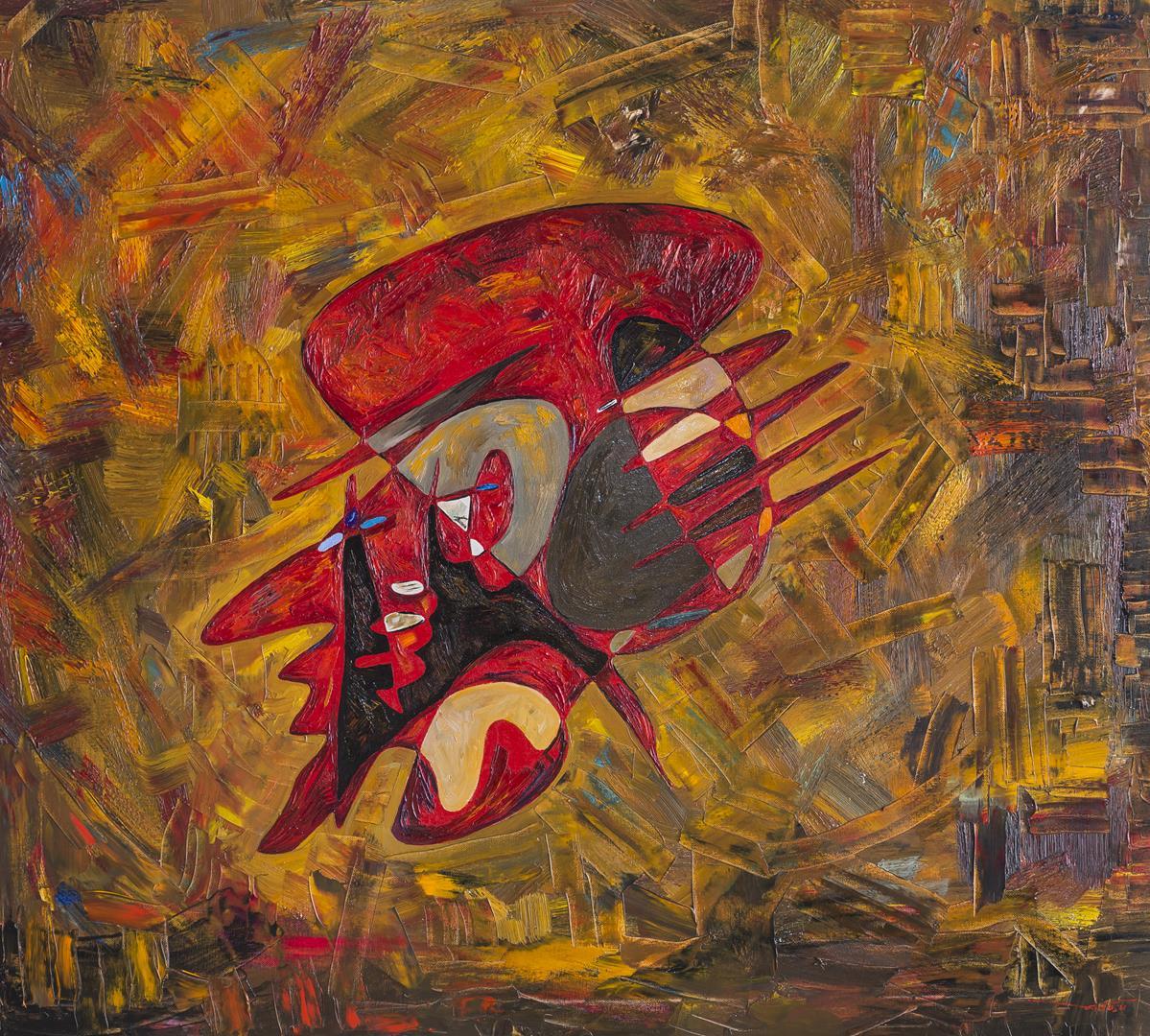
Abstract and geometric art – since ancient times
Even though avant-garde artists have popularized the genre in the early twentieth century, similar motifs have been used in art since ancient times.
Geometric abstraction is present among many cultures, both as decorative motifs and as art pieces themselves. Islamic art, in its geometric pattern-based artwork, existed centuries before the European movement and influenced Western school. Used in the architecture of Islamic civilizations spanning the 7th century-20th Century, geometric patterns were used to visually connect spirituality with Art and science, both of which were crucial to Islamic thought of this time.
About author: Alina Livneva was born 1985 in Saint Petersburg, Russia. She studied at Saint Petersburg Academy of Arts. Educated in Russia and the United States. Lives in Miami. Has also lived in Russia. Contemporary Art. Collections expert, exhibitions and loans. E: [email protected]




